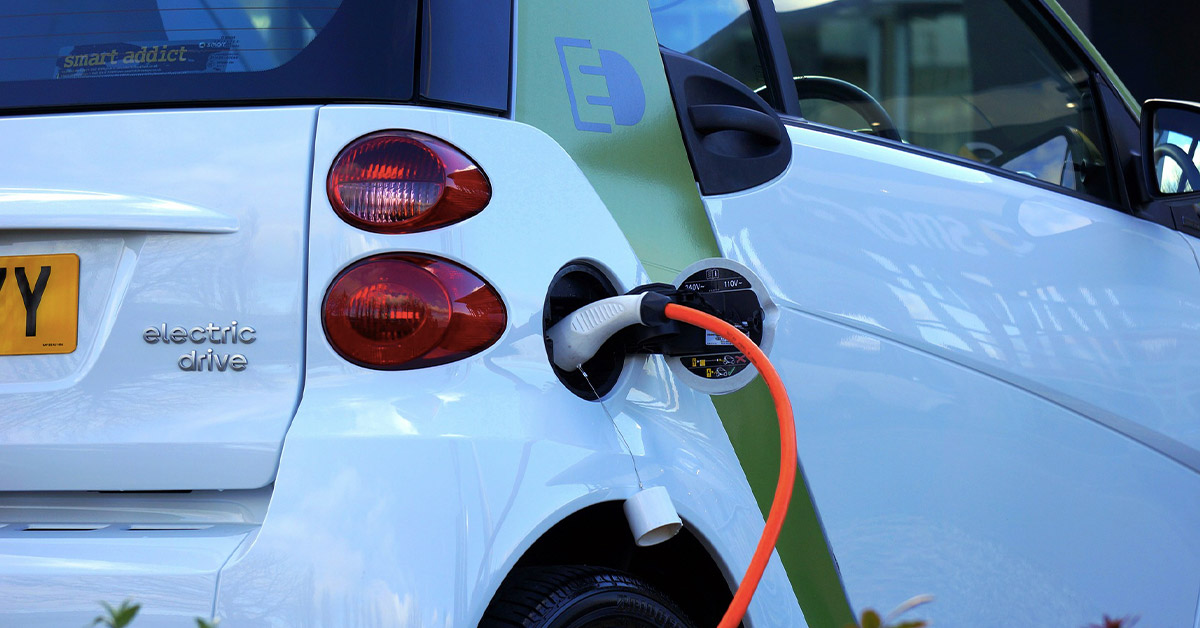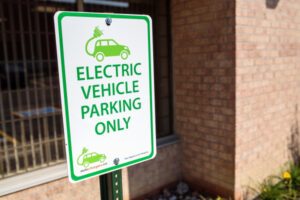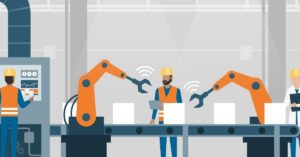E-commerce giant Amazon plans to run on 100% renewable energy by 2030 and is working to include 100,000 EV delivery vans for its Prime deliveries
India’s leading online grocery company Bigbasket has also begun to use electric bikes and three-wheelers for last-mile delivery, to ramp up its fleet of 800 EVs to 4,000-5,000 in the next two years
Most EVs available in the market have a mileage of 80 to 100 miles in one charge and can last up to 12 hours

From March 2020, the increase in the number of Covid-19 cases all across the world and growth in the numbers of online shopping has pushed the importance of last-mile to the forefront of the overall supply chain process. Among all the sectors of the country which were impacted by the nationwide lockdown, e-commerce and last-mile delivery showed the most resilience and recovered strongly in no time. The recent demand in the market and the growth of the e-commerce industry have transformed the global marketplace. A recent report suggests that the consumers spent $861.02 billion on online shopping in 2020, a 44% rise over the prior year. There has been a steep rise in the number of last-mile delivery operations. Last-mile deliveries are expected to result in 36% more delivery vehicles in the top 100 global suburbs by 2030. This is also expected to increase carbon emissions unless effective measures are taken.
This has also pushed the last mile delivery through electric vehicles. During this time, e-commerce giant Amazon plans to run on 100% renewable energy by 2030 and is working to include 100,000 EV delivery vans for its Prime deliveries. One more big giant in this segment is planning to accelerate the use of electric vehicles in last-mile delivery and will deploy over 25,000 EVs in the fleet by 2030, according to a regulatory filing. Now, electric delivery vehicles are becoming a more common sight on inner-city roads in most countries. IKEA is also aiming to have 25 percent of its last-mile deliveries made by electric vehicles by 2025.
India’s leading online grocery company Bigbasket has also begun to use electric bikes and three-wheelers for last-mile delivery, to ramp up its fleet of 800 EVs to 4,000-5,000 in the next two years. EVs are seen as an effective replacement for fuel-intensive automobiles especially in last-mile delivery, to address the issue of rising pollution, global warming, and depleting natural resources. The EV market is ready to recover swiftly in the post-Covid situation. In India, E-rickshaws, e-autos and e-two wheelers are the most prominent segments for electrification and are expected to account for over four million units by 2025.
Electric vehicles are quite low maintenance. Most EVs available in the market have a mileage of 80 to 100 miles in one charge and can last up to 12 hours. These vehicles don’t need any maintenance, they just need a battery replacement or maintenance, once every couple of years. Recently research by automotive data experts said that an electric car is at least 30% cheaper to service and maintain than an internal combustion-engine vehicle. The shift of last-mile delivery to electric mobility has become necessary now more than ever owing to the fast depletion of fossil fuels, increase in energy costs, severe side effects of last-mile delivery on the environment through petrol diesel vehicles, and digital intervention.
Both state and central governments along with the industry players have succeeded in demonstrating that electric vehicles could deliver the practicality, sustainability, safety, and affordability characteristics expected from them. Machine learning, Artificial Intelligence, the internet of things (IoT), cloud computing, advanced analytics, renewable energy are some areas of innovation and technology that have been adopted to bring about changes in functioning especially this time when the whole world is suffering from a pandemic.
A recent report by SOTI Inc. suggests that 61% of logistics companies and sometimes more agree that last-mile delivery is the most inefficient process in the entire supply chain. The main aspect of last-mile service is to emphasize speed, timely delivery and accuracy, to improve brand loyalty and customer satisfaction. Today, 56% of shoppers won’t buy from a brand again if they’re not satisfied with the shipping service as per the study. At the same time, the last mile represents one of the most time-consuming and expensive elements of the entire e-commerce supply chain and it accounts for more than 53% of total shipping costs.
Certain Challenges Faced By Last-Mile Delivery And Measures To Overcome Them
Today, 86% of customers are ready to pay for expedited deliveries, it still is a challenge for most enterprises to execute it in a lossless manner. From penalties for delays in deliveries, the volatility in demand makes it incredibly challenging to take decisions on how much inventory to keep, managing temporary staff and several such factors contributing to overheads.
Outdated technology. For last-mile delivery, global transportation and logistics corporations rely on outmoded technology. It doesn’t help much when it comes to dealing with delays and expensive delivery fees. However, coupled with the use of the internet of things (IoT), GPS tracking systems installed in delivery vehicles can monitor the entire last-mile travel, foresee any potential roadblocks, and design proactive tactics for dealing with them.
Optimize Your Routes. Poor routes mean delayed deliveries, unhappy customers, and loss of revenue and profits. Route optimization is very critical for making seamless and cost-effective final-mile deliveries. A proper and well-planned route can help the drivers to make more stops and deliveries as they won’t be stuck in traffic or facing other bottlenecks on the road. Companies can use the help of a last-mile delivery app that also helps to assign a balanced workload to the drivers, ensuring they are all well-equipped with deliveries and no one is overworked or underworked. The solutions to these last-mile deliveries come with a GPS tracker that helps to track the last-mile delivery. Tracking drivers’ activities on the road in real-time ensures that they do not deviate from the scheduled assignments.
Low-efficiency levels. The major challenge to fulfill customer satisfaction drives the increased efficiency of last-mile delivery. These high levels of efficiency are also very important for boosting fulfillment capacities. Lack of efficiency can raise the delayed deliveries and frustrate customers, especially when handling large order volumes. Deploy last-mile delivery software to overcome these challenges that streamline the process from the warehouse to the customer’s doorstep. Rerouting the workforce can also impact the deliveries.
High delivery costs. For both customers and the business, the last-mile delivery tends to be getting expensive. Infrastructure that supports timely deliveries can be very costly. Last-mile delivery companies must allocate money for complex routes, failed deliveries, extra stops along the delivery route, drivers’ salaries, and fleet operation. High delivery costs for the customers can lead to an increase in cart abandonment rates. Research shows that 55 % of customers abandon their shopping carts if presented with an extra shipping cost. A proper and detailed plan for route and higher efficiency can lower those expenses and solve these challenges.









